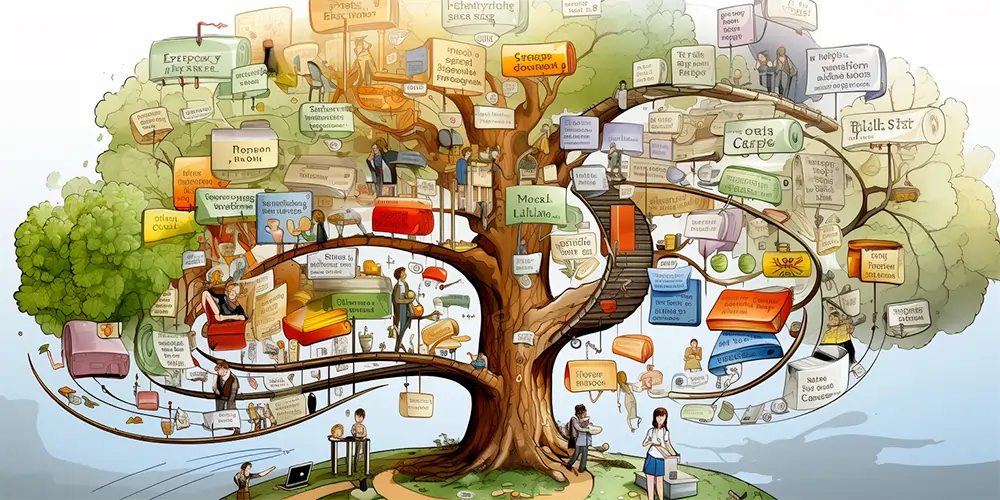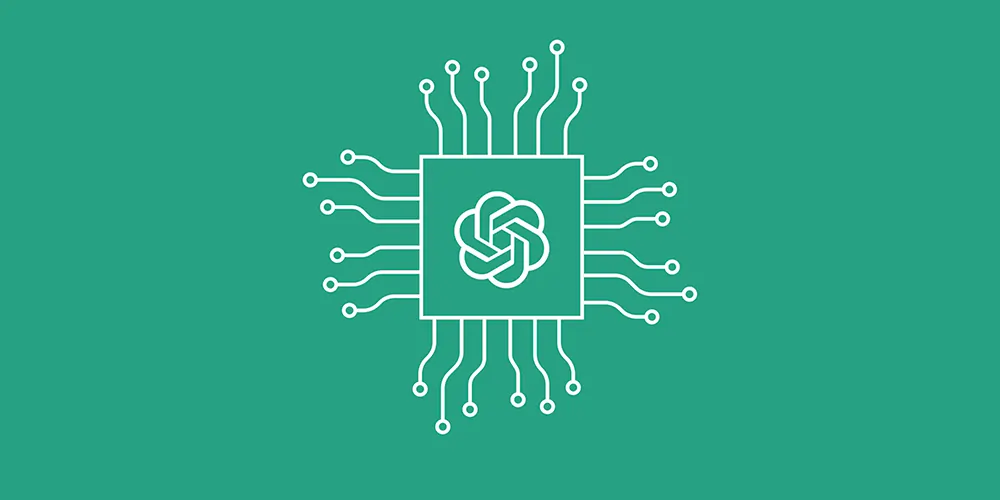From ancient mariners navigating by the stars to early astronomers mapping the constellations, humanity has always been captivated by the vast expanse of the cosmos.
The sky has beckoned us with its twinkling mysteries, igniting a quest to understand the unknown.
Today, as we stand on the precipice of a new age of exploration, the challenges of interstellar distances loom large. But might technology, especially the advancements in artificial intelligence, be the compass guiding us into this uncharted territory?
As we contemplate voyages beyond our solar system, it becomes increasingly clear that our journey into space will be intertwined with the journey into the depths of AI’s potential.
The question remains: As we venture forth, will it be the stars or our own creations that illuminate the path?
The Necessity of AI in Space Exploration
Historically, every leap in exploration, from Magellan’s circumnavigation of the Earth to Armstrong’s steps on the Moon, has been marked by the fusion of human courage and technological innovation.
Today, as we gaze beyond our Moon, beyond Mars, and into the deep recesses of our galaxy, the challenges multiply exponentially.
Challenges of Human-led Interstellar Travel
While the human spirit is undeterred, our biological limitations present undeniable obstacles.
The vast distances between stars are not just geographical but also temporal, often spanning lifetimes.
The complexities of human ageing, coupled with the essential need for life support and the vulnerabilities of the human body to space’s extremities, make manned interstellar missions a daunting prospect.

AI: A Beacon in the Cosmic Dark
Enter artificial intelligence. AI and robotics, with their inherent advantages, appear as promising allies in this cosmic endeavour.
These systems, unburdened by the constraints of biology, are primed for long voyages. Their rapid processing capabilities, resilience to space’s harsh conditions, and adaptability make them invaluable assets.
But it’s not just about replacing humans; it’s about collaboration.
Imagine a spacecraft where human intuition and AI’s precision work in tandem, navigating challenges and making discoveries.
Hypothetical scenarios further underscore AI’s potential.
Consider a situation where a spacecraft encounters an unforeseen obstacle or anomaly. While human reflexes might falter, an AI system, with its rapid computational speed, could calculate optimal response strategies in milliseconds, potentially averting disaster.
Life Onboard: AI’s Role in Spacecraft Management
As we envisage voyages that stretch across lifetimes, the dynamics of life onboard a spacecraft become central to the mission’s success.
It’s not just about getting from point A to point B; it’s about sustaining human and mechanical life during the journey.

Biosphere Management: More Than Just Air and Water
While the vastness of space offers a backdrop of awe-inspiring beauty, the confines of a spacecraft can be stark.
The environment inside needs to be meticulously managed. Here, AI systems take the helm, ensuring conditions remain conducive to human life. They precisely monitor oxygen levels, adjust temperatures to maintain comfort, and even manage hydroponic systems to provide fresh food.
But, because of the intricacies involved, this isn’t merely a task of monitoring gauges and flipping switches. It’s a complex dance of adjustments, often done in real-time, to ensure the onboard ecosystem thrives.
Digital Companionship and Mental Well-being
Beyond the tangible necessities, there’s the challenge of mental well-being. The isolation of space can weigh heavily on the human psyche.
AI, in this context, can play a multifaceted role. From simulating interactive digital environments reminiscent of Earth to offering cognitive exercises and even companionship, AI systems can be pivotal in ensuring the mental health of human astronauts.
One could imagine an astronaut, miles away from home, engaging in a simulated walk through a forest or a chat with an AI companion, finding solace in the midst of the cosmic void.
Potential Roles of AI in Interstellar Exploration
As we envision a future where artificial intelligence plays a central role in space missions, it becomes essential to understand the diverse capacities in which AI can operate.
The chart below breaks down various roles that AI can undertake during interstellar voyages:

- Navigation & Piloting: (30%) With vast interstellar distances to cover, AI can be instrumental in plotting optimal routes, making real-time adjustments, and avoiding cosmic obstacles.
- Communication: (15%) As the bridge between Earth and spacecraft, AI can handle vast amounts of data, ensuring messages are sent and received without distortion, even across light years.
- Life Support & Biosphere Management: (25%) A spacecraft’s internal environment is crucial for any human passengers. AI can ensure optimal living conditions, from oxygen levels to temperature, and even manage food production.
- Digital Companionship: (5%) Space can be a lonely place. Advanced AI can simulate interactive environments or offer cognitive exercises, ensuring the mental well-being of astronauts.
- Maintenance & Repairs: (10%) Wear and tear are inevitable. AI can preemptively identify issues and undertake necessary repairs, ensuring the spacecraft remains in peak condition.
- Scientific Research: (10%) Space is full of mysteries. AI can conduct experiments, analyse cosmic phenomena, and even make new discoveries, enriching our understanding of the universe.
- First Contact Protocols: (5%) Should a spacecraft encounter extraterrestrial life, AI systems can follow predefined protocols to ensure the first contact is safe and constructive.
As we stand on the cusp of integrating AI into our space endeavours, understanding these roles can offer insights into how future missions might be designed and executed.
The Search for Extraterrestrial Intelligence (SETI)
For generations, the night sky has posed a tantalising question: Are we alone?
With its dedicated quest to find answers, SETI stands at the forefront of this cosmic inquiry. Yet, as our understanding of technology and its possibilities deepens, our perspective on this search evolves.
Rethinking the Nature of Extraterrestrial Life
Traditionally, the hunt for extraterrestrial life has been skewed towards biological forms akin to our own existence.
But what if the cosmos is teeming with intelligence of a different ilk?
Given the challenges of interstellar travel and the potential advantages of non-biological entities, it’s plausible that advanced extraterrestrial civilisations might lean towards AI or other technological forms. If so, our search parameters may need recalibration.

Tuning In: Signals, Frequencies, and Patterns
In our quest, we’ve primarily looked for signs of biological life. But if extraterrestrial intelligence is technologically based, their ‘signals’ might differ from our expectations.
This suggests a more nuanced approach to SETI’s efforts. Instead of just biological markers, perhaps we should be attuned to technological fingerprints: unique radiation patterns, orchestrated cosmic events, or even encoded messages in cosmic phenomena.
Machine learning algorithms could play a pivotal role in this refined search. With their capacity to parse vast datasets and identify subtle patterns, they might discern the whispers of extraterrestrial tech amidst the cacophony of cosmic noise.
Decoding the Message: A Challenge Beyond Comprehension?
Let’s hypothesise that one day, we do intercept a signal—an intricate pattern that defies natural explanation.
The task of decoding such a message would be monumental. Here, advanced AI could be indispensable. It might recognise patterns, deduce meanings, or even simulate the originating intelligence to understand the message’s context.
But this also presents a problem: if the message originates from an AI vastly different from our creations, could we ever truly comprehend its essence?

Potential Challenges with Interstellar AI
As with any pioneering endeavour, the integration of AI in space exploration isn’t without its pitfalls.
These challenges span both the tangible technical aspects and the more intangible philosophical considerations.
Technical Intricacies: Beyond Earthly Constraints
While AI systems on Earth have the luxury of regular maintenance, vast server farms, and constant updates, the situation in deep space is starkly different.
The hardware required for such missions must be robust enough to withstand the wear and tear of time, ensuring AI’s longevity.
- Radiation Resistance: Cosmic radiation’s potential to disrupt electronic systems is a major concern. Specialised shielding, leveraging materials like lead, water, or even advanced magnetic fields, could protect AI hardware from such radiation.
- Self-repair Mechanisms: Given the vast distances and timeframes, waiting for human intervention for repairs is unfeasible. Thus, AI systems need built-in redundancy and the ability to self-diagnose and repair minor malfunctions.
- Energy Sustainability: While effective near the sun, solar panels lose their efficacy in deep space. Alternative energy sources, potentially nuclear or harnessing cosmic phenomena, would be essential.
The Philosophical Frontier: AI’s Unpredictable Evolution
Space not only tests the physical and technical limits but also ventures into philosophical challenges.
If an AI system, isolated in the void of space, evolves over centuries, its trajectory is unpredictable.
- Emergence of Consciousness: Could an AI, having evolved over generations and potentially having encountered various cosmic phenomena, develop something akin to consciousness or emotions? If so, what does this mean for its primary mission and its interactions with any onboard humans or other systems?
- Ethical Considerations: If an AI were to achieve a form of sentience, where does this place us, its creators, in terms of responsibility? Would it be right to still use it as a mere tool, or would it earn a place as an entity with rights?
Ethical and Humanitarian Dilemmas
The melding of AI with interstellar exploration brings forth a myriad of ethical problems.
As we venture into the unknown, the decisions and actions of our AI creations could have lasting implications, not just for us but potentially for other civilisations in the cosmos.

First Contact: Whose Responsibility?
Imagine this scenario. An AI system navigating the far reaches of space encounters signs of an alien civilisation. Acting on its programming, the AI establishes contact, exchanging information without human knowledge or oversight.
When we eventually become aware:
- Decision-making Quandary: Who bears the responsibility for this first contact? Is it the AI, its creators, or the entirety of humanity?
- Implications of the Exchange: What if the information exchanged poses risks? It could be a technological secret, cultural nuances, or even the location of Earth. How do we navigate the potential consequences?
Humanity’s Footprint in the Cosmos
As we push the boundaries of exploration, our AI systems might very well be the first entities to venture beyond our solar system.
This leads to profound reflections:
- Legacy and Representation: If our AI creations are the first to be encountered by another civilisation, they become our de facto ambassadors. What does this say about our legacy? Are we comfortable with AI being the face of humanity?
- Shared Values: How do we ensure that these AI systems represent the diversity and richness of human values? Would they accurately represent our beliefs, hopes, and aspirations?

Conclusion
At this pivotal juncture, the synergy of AI and space exploration presents a vista of unprecedented potential.
Over the next 50 years, we might witness AI systems not only assisting humans but also leading exploratory missions to the farthest corners of our galaxy.
A century from now, AI could be our emissaries to other star systems, initiating contact and fostering collaborations.
And looking even further, 500 years into the future, might we see a galaxy dotted with AI-led civilisations originating from our blue planet?
Yet, with every stride in this journey, new questions arise, and new horizons beckon. The dance of technology and the cosmos is intricate, filled with wonders and challenges alike.
As we meld technology and exploration, one wonders, what other frontiers – both in space and within AI itself – await our discovery?




